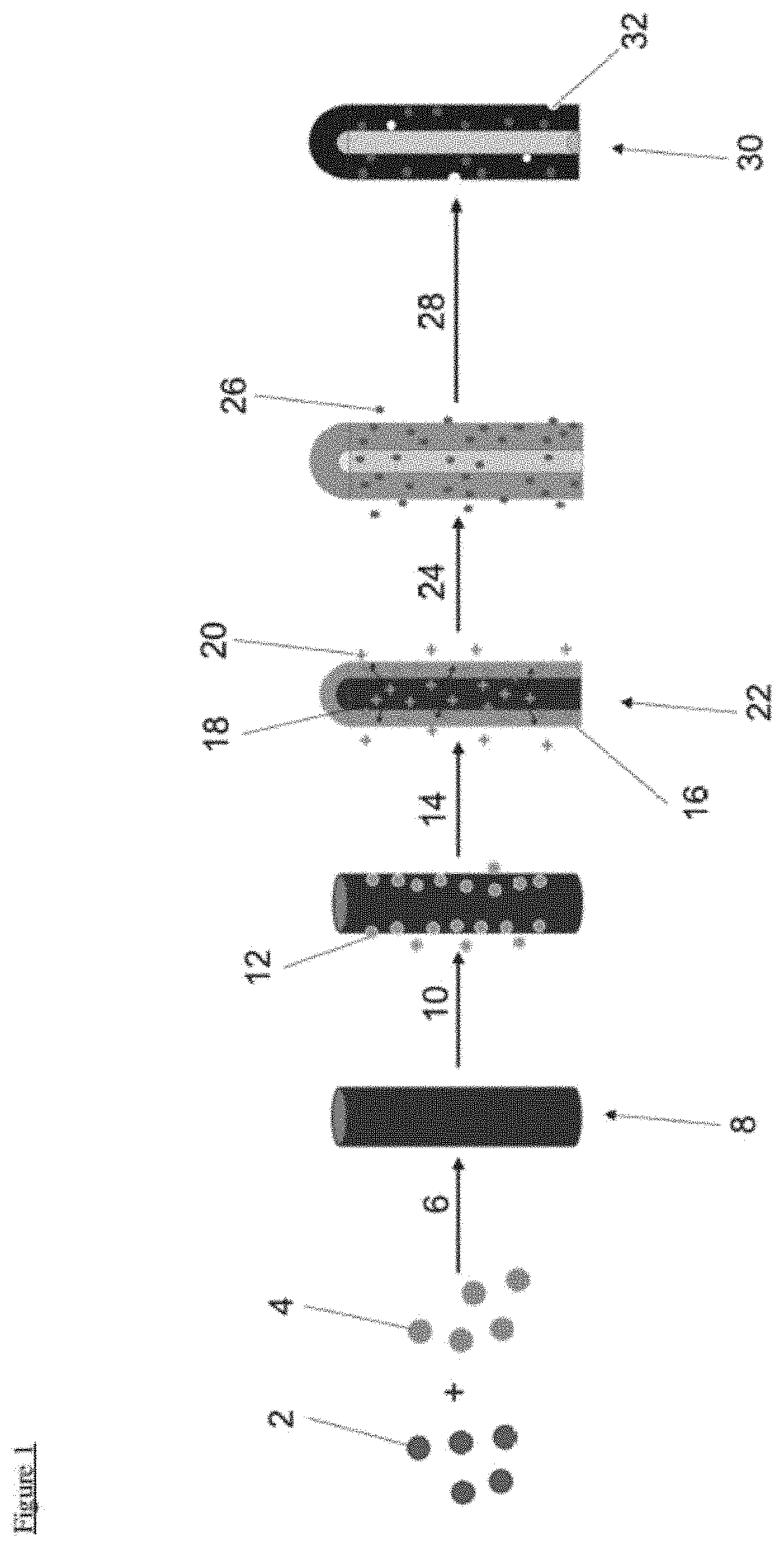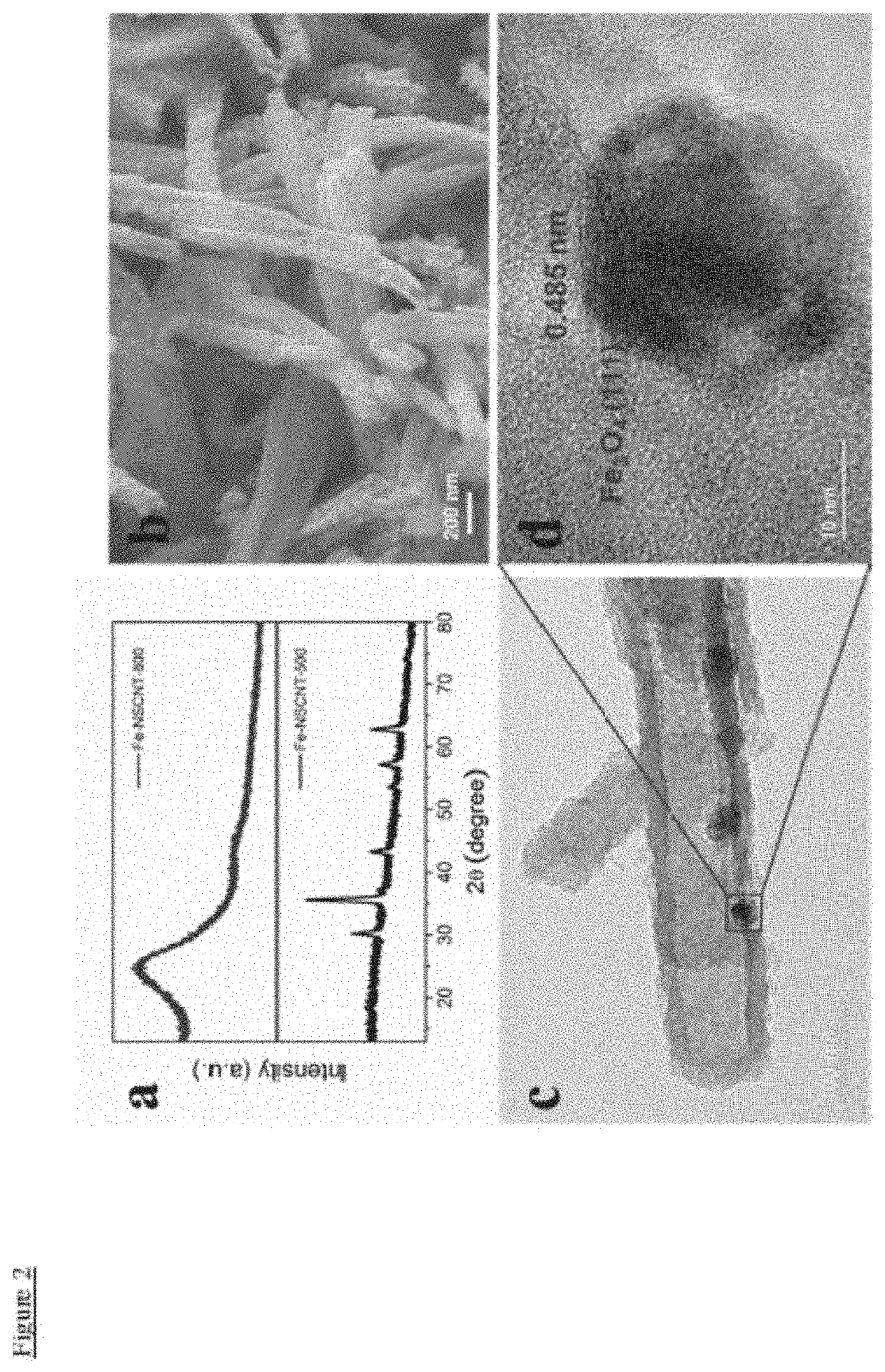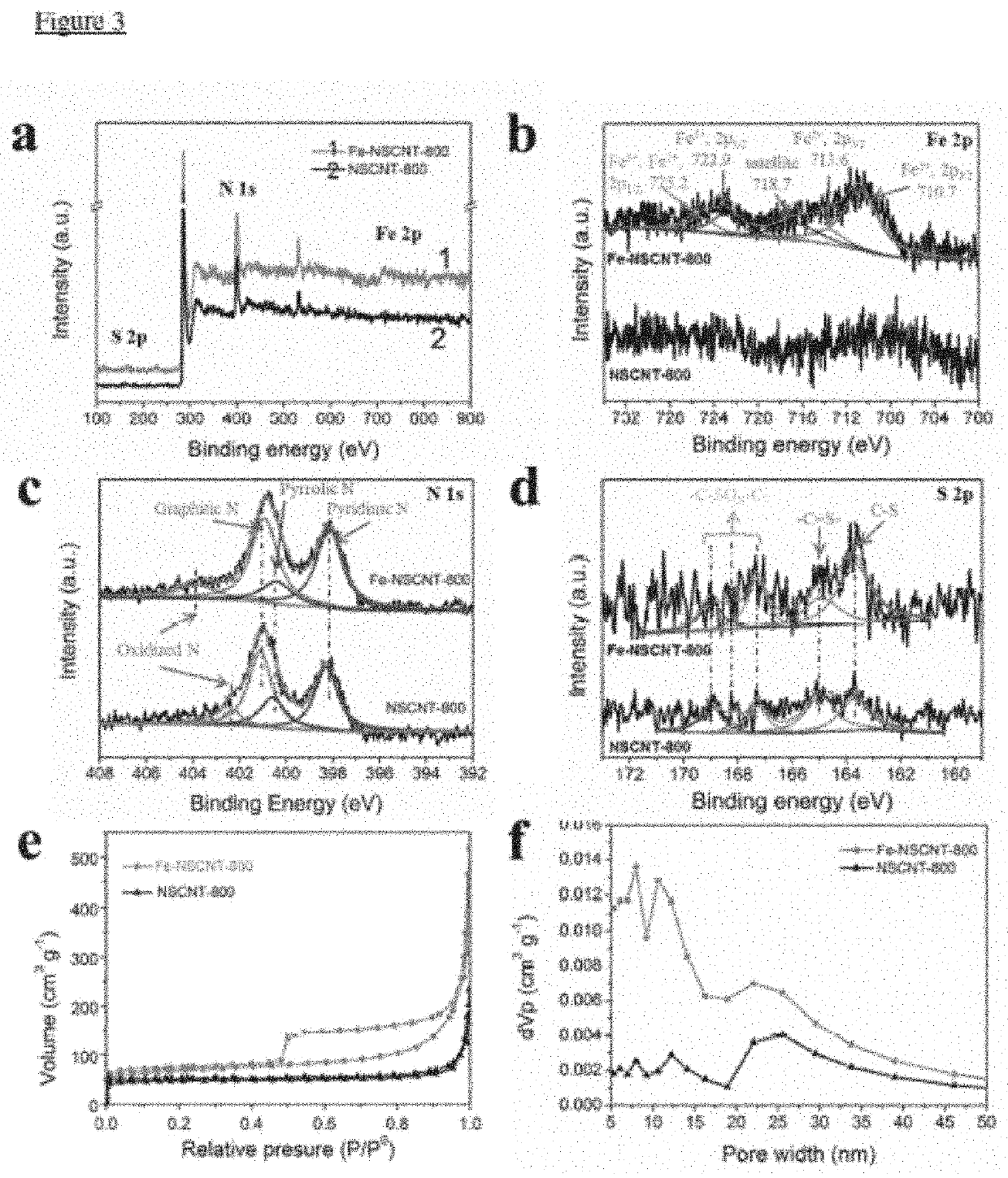Method of making carbon nanotubes doped with iron, nitrogen and sulphur
a carbon nanotube and nitrogen-based technology, applied in the direction of fuel, primary cells, physical/chemical process catalysts, etc., can solve the problems of high cost, aggregation of alkaline electrolytes, and problems of catalysts, and achieve excellent orr performance and simple and scalable methods.
- Summary
- Abstract
- Description
- Claims
- Application Information
AI Technical Summary
Benefits of technology
Problems solved by technology
Method used
Image
Examples
Embodiment Construction
[0046]With regard to FIG. 1, the overall method of making carbon nanotubes doped with iron, nitrogen and sulphur is illustrated.
[0047]In the first step, 5 mmol methyl orange 2 was dissolved in 30 ml deionized water, and then mixed 6 with an iron containing oxidising agent such as 1.5 mmol iron(iii) chloride (FeCl3) to form a fibrous fluctuate comprising reactive templates 8.
[0048]An azo compound such as 105 μl pyrrole 12 is then added 10 which reacts 14 in an in-situ polymerisation, coating the templates with polypyrrole 16. The iron(iii) (Fe3+) ions 20 from the inner fibre migrate out to oxidize the pyrrole, leaving iron(ii) (Fe2+) ions 18 inside, resulting in the formation polypyrrole-methyl orange nanotubes 22.
[0049]An alkali such as 50 ml 0.5M sodium hydroxide (NaOH) is then added 24, which causes magnetite (Fe3O4) 26 to precipitate in the walls of the nanotubes. The precipitate was filtered, washed with deionized water / ethanol, and dried in vacuum at 60° C. for around 24 hours....
PUM
| Property | Measurement | Unit |
|---|---|---|
| wavelength | aaaaa | aaaaa |
| rotating speed | aaaaa | aaaaa |
| rotating speed | aaaaa | aaaaa |
Abstract
Description
Claims
Application Information
 Login to View More
Login to View More - R&D
- Intellectual Property
- Life Sciences
- Materials
- Tech Scout
- Unparalleled Data Quality
- Higher Quality Content
- 60% Fewer Hallucinations
Browse by: Latest US Patents, China's latest patents, Technical Efficacy Thesaurus, Application Domain, Technology Topic, Popular Technical Reports.
© 2025 PatSnap. All rights reserved.Legal|Privacy policy|Modern Slavery Act Transparency Statement|Sitemap|About US| Contact US: help@patsnap.com



